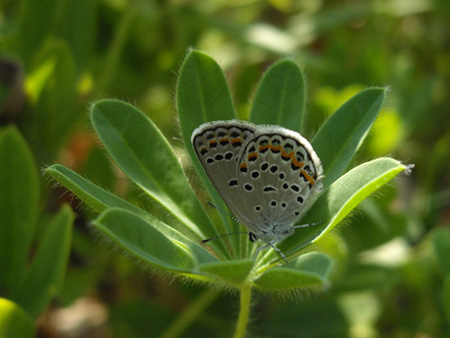Government Grants
Business Grants
Home Owner Programs
Federal Programs
About Us
African Elephant Conservation Fund FY14
The African Elephant Conservation Fund is accepting project proposals for the conservation of elephants in Africa.
In 1988 Congress passed the African Elephant Conservation Act in response to the alarming decline of African elephant populations.
The Act provides for the establishment of the African Elephant Conservation Fund to provide financial assistance to support projects that will enhance sustainable conservation programs to ensure effective, long-term conservation of African elephants.
The African Elephant Conservation Fund supports projects that promote conservation through:
Enhanced protection of at-risk elephant populations; Efforts to decrease human-elephant conflict; Habitat conservation and management; Protected area/reserve management in important elephant range; Strengthening local capacity to implement conservation programs; Transfrontier elephant conservation; Wildlife inspection, law enforcement, and forensics skills; Conservation education and community outreach; Applied research necessary to inform protection and management, including surveys and monitoring; Development and execution of elephant conservation management plans; Development of innovative technologies that have the potential to improve elephant protection; Compliance with applicable treaties and laws that prohibit or regulate the taking or trade of elephants or regulate the use and management of elephant habitat; Reducing demand for and trafficking of illegal ivory products.
Proposed project work should occur within the range of the African elephant, or, if work is to be conducted outside of the range, the proposal must explain how the work will benefit elephants in Africa.
Proposals must identify immediate threats to elephant survival and support direct conservation activities to eliminate or reduce those threats.
Applicants may submit proposals from any project sites with indigenous elephant populations, but the following important elephant populations will be considered priorities:
CENTRAL and WEST TRIDOM region:
including Minkebe, Djoua-Belinga, Ivindo, Mwagne, Odzala-Kokoua, Ngombe FMU, Ntokou Pikounda, Mengame Dja, Nki, Boumba Bek Greater Sangha-Ndoki region:
Lobeke, Dzanga, Ndoki-Likouala aux Herbes, Nouabale-Ndoki, Lac Tele Central African coast:
Gamba complex-Loango-Moukalaba Doudou-Mayumba-Conkouati Lope-Waka-Birougou Maiko-Okapi-Ituri forest W-Arly-Pendjari EAST and SOUTHERN Northern Botswana-Khaudum-Caprivi-Hwange Selous-Mikumi-Niassa Moyowosi-Kigosi/Ugalla/Katavi-Rukwa/Ruaha-Rungwa Luangwa-Zambezi valley Laikipia-Samburu Greater Limpopo Transfrontier Conservation Area (Kruger, Gonarezhou) Tsavo-Amboseli-Chyulu Priority will also be given to ecologically or evolutionarily unique populations, defined by at least one of the following conditions:
(a) the population is reproductively isolated and differs markedly in its genetic characteristics from other elephant populations; (b) the population persists in an ecological setting unusual for elephants; or (c) the loss of the population would result in a significant gap in elephant range.
In 1988 Congress passed the African Elephant Conservation Act in response to the alarming decline of African elephant populations.
The Act provides for the establishment of the African Elephant Conservation Fund to provide financial assistance to support projects that will enhance sustainable conservation programs to ensure effective, long-term conservation of African elephants.
The African Elephant Conservation Fund supports projects that promote conservation through:
Enhanced protection of at-risk elephant populations; Efforts to decrease human-elephant conflict; Habitat conservation and management; Protected area/reserve management in important elephant range; Strengthening local capacity to implement conservation programs; Transfrontier elephant conservation; Wildlife inspection, law enforcement, and forensics skills; Conservation education and community outreach; Applied research necessary to inform protection and management, including surveys and monitoring; Development and execution of elephant conservation management plans; Development of innovative technologies that have the potential to improve elephant protection; Compliance with applicable treaties and laws that prohibit or regulate the taking or trade of elephants or regulate the use and management of elephant habitat; Reducing demand for and trafficking of illegal ivory products.
Proposed project work should occur within the range of the African elephant, or, if work is to be conducted outside of the range, the proposal must explain how the work will benefit elephants in Africa.
Proposals must identify immediate threats to elephant survival and support direct conservation activities to eliminate or reduce those threats.
Applicants may submit proposals from any project sites with indigenous elephant populations, but the following important elephant populations will be considered priorities:
CENTRAL and WEST TRIDOM region:
including Minkebe, Djoua-Belinga, Ivindo, Mwagne, Odzala-Kokoua, Ngombe FMU, Ntokou Pikounda, Mengame Dja, Nki, Boumba Bek Greater Sangha-Ndoki region:
Lobeke, Dzanga, Ndoki-Likouala aux Herbes, Nouabale-Ndoki, Lac Tele Central African coast:
Gamba complex-Loango-Moukalaba Doudou-Mayumba-Conkouati Lope-Waka-Birougou Maiko-Okapi-Ituri forest W-Arly-Pendjari EAST and SOUTHERN Northern Botswana-Khaudum-Caprivi-Hwange Selous-Mikumi-Niassa Moyowosi-Kigosi/Ugalla/Katavi-Rukwa/Ruaha-Rungwa Luangwa-Zambezi valley Laikipia-Samburu Greater Limpopo Transfrontier Conservation Area (Kruger, Gonarezhou) Tsavo-Amboseli-Chyulu Priority will also be given to ecologically or evolutionarily unique populations, defined by at least one of the following conditions:
(a) the population is reproductively isolated and differs markedly in its genetic characteristics from other elephant populations; (b) the population persists in an ecological setting unusual for elephants; or (c) the loss of the population would result in a significant gap in elephant range.
Obtain Full Opportunity Text:
USFWS Information
Additional Information of Eligibility:
Not Available
Full Opportunity Web Address:
http://www.fws.gov/international/grants-and-reporting/how-to-apply.html
Contact:
Cory BrownInternational Affairs SpecialistPhone 703-358-2221
Agency Email Description:
cory_brown@fws.gov
Agency Email:
cory_brown@fws.gov
Date Posted:
2013-09-13
Application Due Date:
2013-12-02
Archive Date:
2014-01-01
Social Entrepreneurship
Spotlight
Childcare Charitable Group Named Top Social Enterprise

Employers For Childcare Charitable Group (EFCG), a Lisburn-based charity, has been crowned top Social Enterprise at the Ulster Final of 2014’s Ulster Bank Business Achievers Awards. EFCG seeks to “make it easier for parents with dependent children to get into work and to stay in work.”

